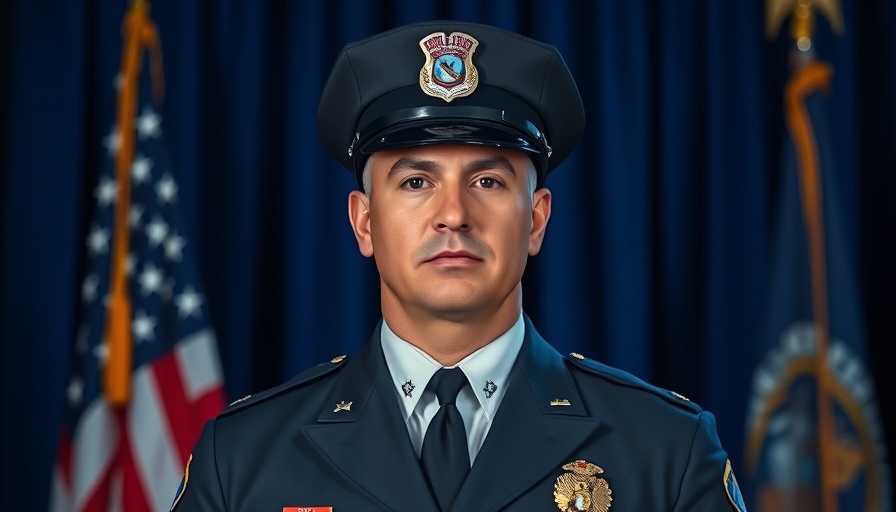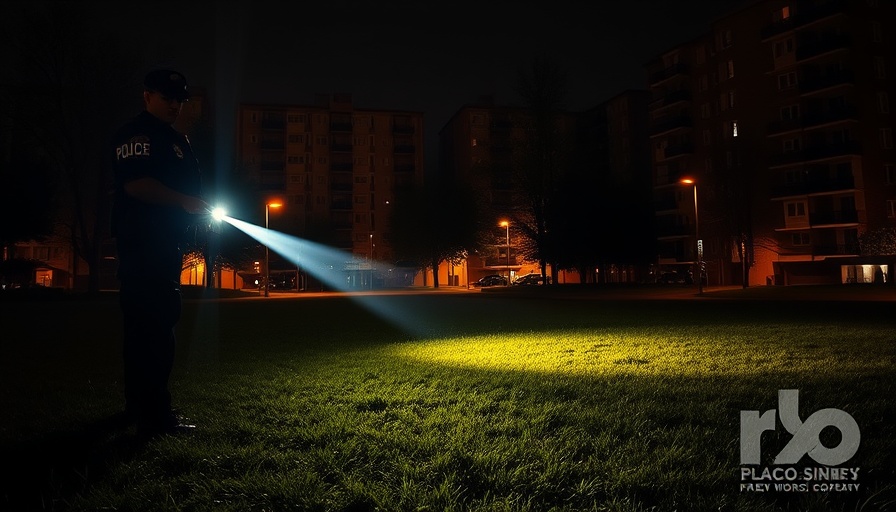
Understanding the Nature of Police Engagements in High-Stress Situations
The recent incident in Cedar Rapids, Iowa, captures the harrowing reality police officers often face during dangerous confrontations. During an 11-hour standoff on February 19, Christopher Kern, a convicted felon, opened fire on officers who were trying to arrest him. Body camera footage released by the Cedar Rapids Police Department showcases the intense exchange, revealing how quickly situations can escalate when law enforcement attempts to intervene in criminal activity.
A Deeper Look at Officer Safety and Incident Response
When officers confronted Kern, who was armed and barricaded inside an apartment, their safety hinged on their training and technology. The incident underscores the critical need for effective police training programs that simulate high-stress environments. Such training can prepare officers to manage their responses amidst threat and chaos, potentially saving lives.
The Role of Technology: Body Cameras in Law Enforcement
Body cameras have become an essential tool in law enforcement, promoting transparency and accountability. In the case of Kern, the body camera footage not only provided a firsthand account of the standoff but also served as a pivotal piece of evidence in the court proceedings that followed. This incident highlights how police technology can support investigations and clarify situations that might otherwise be misrepresented.
Implications for Public Safety and Criminal Justice Reform
As society grapples with police accountability and criminal justice news, this standoff emphasizes the urgent need for reform. Federal and state policymakers must recognize these violent confrontations as opportunities to reassess training protocols, gear used by officers, and the overarching strategies employed by law enforcement. By integrating enhanced training and technology, departments can foster safer engagements that prioritize both officer and community safety.
The Community's Role in De-escalation
Communication remains vital in managing standoffs like the one in Cedar Rapids. The officers’ attempts to negotiate with Kern throughout the ordeal reflect a commitment to de-escalation. Can communities, aided by better support systems, play a more significant role in these encounters? Creating open dialogues between law enforcement and residents may facilitate quicker resolutions in future crises, easing tensions that can lead to violence.
Future Predictions: Shaping Tomorrow's Law Enforcement Practices
As we witness incidents like this, the forecast for future police engagements lies in better training and community relations. Enhanced police department updates and education on mental health issues can empower officers to approach scenarios with patience and understanding rather than aggression. Moreover, continual assessments of police use of force strategies can guide officials in deploying the best practices during tense situations.
What This Means for Officer Wellness
In light of these challenges, the emotional strain on officers involved in such standoffs raises concerns about officer wellness. The likelihood of encountering life-threatening scenarios can lead to increased stress and mental health crises among police personnel. Incorporating stress management and mental health resources into regular training can bolster resilience, reducing the incidence of burnout and tragedies within police ranks.
These insights serve as a wake-up call to all stakeholders in the criminal justice system. The Cedar Rapids standoff is a stark reminder of the complex environment police officers navigate daily. A comprehensive approach involving technology, training, and community engagement can redefine public safety and accountability. Taking actionable steps toward reform will ensure that both officers and the communities they serve evolve together, fostering a safer society for all.
As discussions about police reform continue, it is crucial for law enforcement leaders to advocate for changes that will integrate lessons learned from incidents like this one into their practices. The information from the Cedar Rapids standoff illustrates the need for a multifaceted approach to policing that prioritizes accountability, effective training, and the safety of both officers and the public.
 Add Row
Add Row  Add
Add 

 Add Element
Add Element  Add Row
Add Row 




Write A Comment